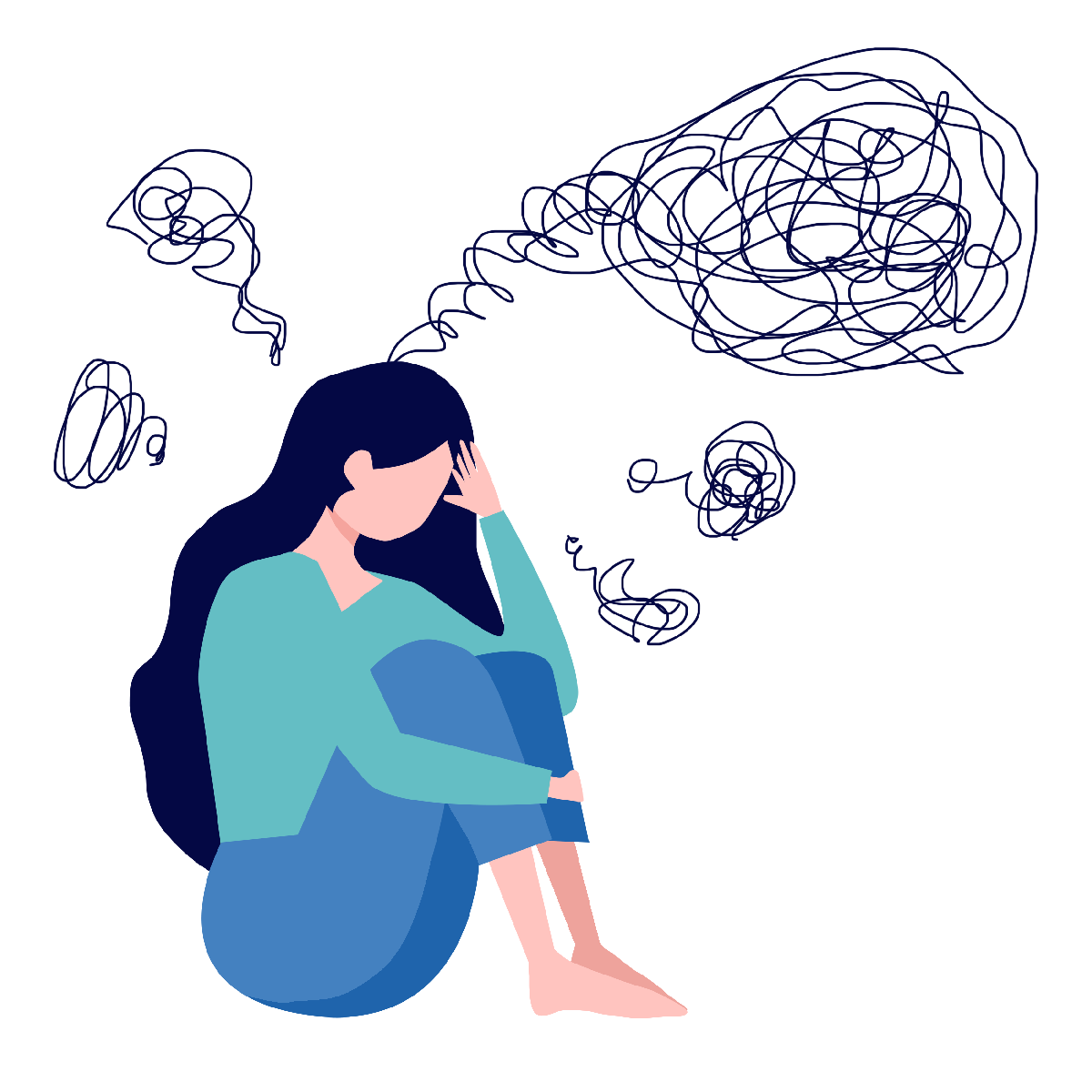Anxiety: When does it become a problem?
You may have heard the phrase "‘Fight or Flight” thrown around a lot when referencing moments of nervousness, fear and danger. This mechanism for survival evolved with us over many millennia from days where humans faced imminent threat from multiple angles. Luckily, for many of us in the modern world, we no longer have to spend every day worrying about threats to our lives. However, this mechanism still remains deeply engrained into our biology. While very helpful in the days where humans needed to be very wary of what was around every corner, fight or flight allowed us to fight off or run away from approaching threats, this response can be very unhelpful in a persons day to day life and even debilitating to the ability to function effectively.
At the basis of this response is anxiety. An all encompassing term for a response to a threat and fear. When thinking of a threat or fear, a lot of us will picture many of the common causes such as a predator or heights. However, while equally as beneficial, this mechanism also can activate in times where there is less of a threat to us physically, Such as a deadline that is due, or if someone were about to perform in front of a crowd. When facing these threats and fears, our fight or flight mode kicks in, releasing stress hormones such as adrenaline which courses through our bodies. This is our brains way of signalling to us that we currently are in danger and should do our best to confront this threat or escape.
Along with signalling to us perceived threats, these hormones also allow us the ability to perform above our normal means for a short period of time to facilitate this. The extra speed, strength and awareness that comes along with the release of stress hormones is like unlocking a form of superhuman abilities for a small period of time. However, not only does this last for a short period of time, it also takes a huge toll on the body. After this response, we can be left feeling drained and devoid of energy. Needing time to recover. Almost like a crash after having a coffee but on a larger scale.
So we have established that a small amount of anxiety is good and beneficial for our survival and performance. However, this mechanism can sometimes malfunction and respond to things that aren’t necessarily an immediate danger. This is where anxiety starts to become an issue. It evolves past the base responding to danger response and becomes a debilitating and crippling disorder.
In this sense, anxiety can refer to excessive worry, fear, or apprehension about future events. Often accompanied by physical symptoms like increased heart rate, shallow breathing, sweating, and muscle tension. It can also manifest as intrusive thoughts, avoidance behaviours, and a sense of impending doom. Anxiety disorders are characterised by persistent and excessive anxiety that interferes with daily life and functioning.
Being aware of the difference between normal anxiety as a response to fear and danger, and an anxiety disorder can be the first step towards recovering from one. Common signs that anxiety has crossed this threshold are:
-
Excessively worrying about normal everyday situations, events and activities such as getting shopping. This worry is usually disproportionately perceived in relation to the actual task in front of someone.
-
Due to the release of stress hormones, anxiety can manifest by way of physical symptoms such as rapid heartbeat, shortness of breath, nausea, sweating, and trembling. These symptoms can be distressing and can cause someone to feel like they are having a heart attack.
-
Anxiety can interfere with sleep, leading to insomnia or restless, disturbed sleep. Lack of quality sleep also increases symptoms of anxiety, creating a vicious cycle.
-
Persistent anxiety can make it challenging to concentrate, impacting work or academic performance and increasing frustration and stress.
-
Due to the anxiety caused, a person may avoid situations they once partook in and enjoyed. Limiting their quality of life.
How therapy can help:
While both disruptive and distressing, therapy can help a person suffering with an anxiety disorder by giving them the tools they and strategies along with the support they need to alleviate symptoms of and manage anxiety. Using these tools, an individual can take back the power over their anxiety and not let it control their lives. A couple of tools therapists might use to help someone manage an anxiety disorder are below:
Cognitive-Behavioural Therapy (CBT) - CBT is widely used for helping manage anxiety. It helps individuals identify and change negative thought patterns and behaviours that contribute to unwanted feelings and symptoms. By learning new coping mechanisms and helping an individual restructure their thoughts, they can manage their anxiety more effectively.
Exposure Therapy - Exposure therapy involves gradual and controlled exposure to the situations or triggers that cause anxiety. Over time, repeated exposure helps the individual feel less fear in that situation and reduce their anxiety response.
So while anxiety is a normal response to typical stimuli that causes feeling of fear and danger in an individual, it can get to a point where it becomes debilitating and damaging to a persons quality of life. Understanding when anxiety has gotten out of hand and when to seek help can be massively beneficial in overcoming the disorder, improving those unhelpful symptoms and living a fulfilling life.
- By Patrick
If you need to talk to a counsellor contact
Relational Counselling



